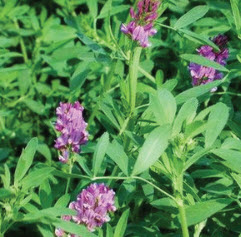Click below to listen to my 2 min. Garden Bite radio show: Planting cover crops
Let’s talk green manure. No, I’m not talking about an animal with a gastrointestinal issue but cover crops. These are plants with a purpose.
They can help with soil erosion, weed control and even fix what’s ailing your soil. ps Some interesting information from thelaundrylady on interplanting cover crops!
This time of year, you can plant oats or annual ryegrass which will grow in cool weather and keep the weeds out, then die before winter. You’ll be adding organic matter and beneficial microorganisms that will boost your flower power next year.

Clover fixes nitrogen in your soil and will overwinter. There’s a large variety of white clover called “Ladino” which is supposed to be particularly beneficial. You’ll turn this under a couple of weeks before you plant next spring. This is a PERENNIAL – that means, you have to TURN it UNDER.
We have a local farmer who uses the no till method. Here’s an article from Extension on Organic-No till gardening

Another nitrogen fixer is ‘Hairy Vetch’, this may also survive the winter and you’ll just turn it under it come spring. Sow the seeds thickly to keep out any weed seeds and mow the plants down if they flower to prevent any self seeding and your cover crop becoming just a weed itself.

Alfalfa is a nitrogen fixer also but it’s a tough perennial with an amazing taproot, which makes it harder to get rid of. A farmer next I lived next to many years ago, planted his corn field and part of my land with it. Unless you plan on leaving it for a few years, then trust me, this one’s probably not the nitrogen fixer you’ll want to use.

UrbanFarmer seeds for weed suppression
If you’ve planted peas or beans in your garden, turn the dead plant material under after a killing frost rather than haul them out to the compost bin.

